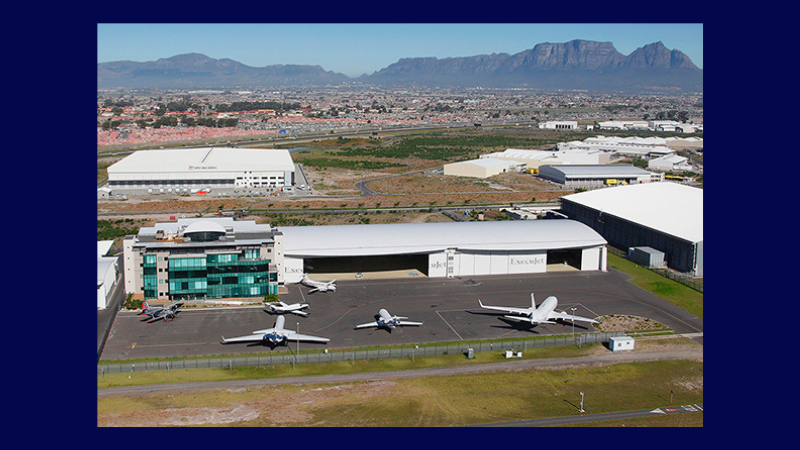Why OEMs keep joining the race for MROs: Dassault acquires ExecuJet

Dassault’s acquisition of Luxaviation subsidiary, ExecuJet — on Monday this week — comes as the most recent in a trail of business manoeuvres being made by aircraft manufacturers today. Typically, OEMs (original equipment manufacturers) have delivered aircraft. And despite always having a close relationship with MRO (maintenance, repair and overhaul) companies — either through authorised service centre agreements or equity investments — acquiring maintenance facilities has never looked more lucrative.
Dassault currently has five company-owned service centres: two in Europe and three in the USA. However, this is the first time it has made an acquisition outside its core business. The absorption of ExecuJet enables the French OEM to broaden its reach to an additional 15 bases around the world — opening up the Asia-Pacific region, Oceania, the Middle East and Africa.
And Dassault is not the first to move in this direction. The business aviation industry is now placing more premium on maintenance of aircraft. Jean Kayanakis, newly appointed senior vice president, Worldwide Falcon Customer Service at Dassault, said: “The first time we saw OEMs moving toward the MRO business would have been three years ago. It was Gulfstream.”
He says that Gulfstream’s North American base helped it establish service centres and expand its reach. The company was also at an advantage thanks to its sister company Jet Aviation, one of the world’s largest operator chains, which currently runs 28 facilities.
Kayanakis says Dassault used to rely on third parties to service its planes in inaccessible locations. However, the lure of better control of customer service seemed too good to pass up.
And, typically, this has been a strong reason for diversification amongst manufacturers before.
More-personalised service leads to a more-loyal customer base — after all, 70% of business jets are bought by existing owners — as well as the obvious higher revenues involved for manufacturers.
As JETNET iQ president, Rolland Vincent, put it: “In the relentless search for product and service differentiation, there is much to be said for having a wide network of facilities and capabilities to capture maintenance service and parts sales, which can be more profitable from a margin percentage than actually building and selling the aircraft.”
He says it is not uncommon for OEMs’ interest in MROs and aftermarket services to increase in periods of declining to flat production. This is because of the fairly predictable streams of revenues that deliver steady earnings.
In fact, OEMs are increasingly willing to boost investments in this sector to lock in this stability.
While Kayanakis was unable to disclose the cost of the ExecuJet deal, other MRO deals have been known to go for as much as $5 billion — as in the case of The Carlyle Group-StandardAero deal.
Bombardier announced in 2018, that it would spend $80 million on a new 300,000 square feet facility in Miami-Opa Locka Executive Airport. This was in addition to the expansion of its Wichita, Tucson and Singapore facilities; not to mention its upcoming centres in London and Tianjin.
It is encouraging customers to “bring their jet home,” with the eventual goal of looking after as many of its jets as possible. As of 2015, the company estimated that 28% of its 4,700-strong fleet was coming into Bombardier’s own maintenance facilities.
The company aims to service one in two of its aircraft by 2020. David Coleal, CEO of Bombardier, said: “In order to bring our jets back home, we have to increase capacity, capability and ensure that we’re taking care of our customers, no matter where they are around the world.”
In the past two years Bombardier has itself added seven line stations and 30 mobile response trucks. The Canadian manufacturer is also looking into changing the way its maintenance hangars are designed and has already upgraded the customer service areas to provide a better overall experience for customers.
Coleal added: “We have great partners in the service sector who are aligned with us. They will never go away. But we’re going to make sure that we’re taking care of as many customers as we can, in as many locations as we can.”
This trend has begun to spur on what is already a cut-throat market, with OEMs and aviation services alike vying for extended outreach. Last May, Jet Aviation completed a $250 million acquisition of fellow business aviation services provider Hawker Pacific, in a strategic move to provide global coverage for its customers. What is less known, however, is that Jet Aviation bested Dassault in a classic auction sniping to win Hawker’s Australian and Middle Eastern facilities.
Vincent said: “Dassault is following in Jet Aviation’s footsteps by acquiring a worldwide MRO network that gives it an even broader global reach.”
The growth of the industry is showing steady signs of expansion outside the traditional Western market. This ensures an increasing need for OEM presence on the ground in distant areas. Vincent also added: “With projections that average aircraft utilization rates will grow in line with stronger demand for charter in the emerging “shared economy”, the demand for MRO and aftermarket services is expected to increase in parallel.”
The move is as strategic for Luxaviation as it is for Dassault. Patrick Hansen, chief executive of Luxaviation Group, said: “We also wanted to make sure that any buyer was a long-term buyer who would grow the business and live up to our responsibility to employees.”
Hansen says that Luxaviation plans to use the cash for more acquisitions. “The sale reshapes Luxaviation very much,” says Hansen. “Maintenance was always a slightly special business compared to the other parts of the group and the sale makes Luxaviation easier to understand both for investors and for customers,” says Hansen. “We can now focus on growing our FBOs, charter and management.”








